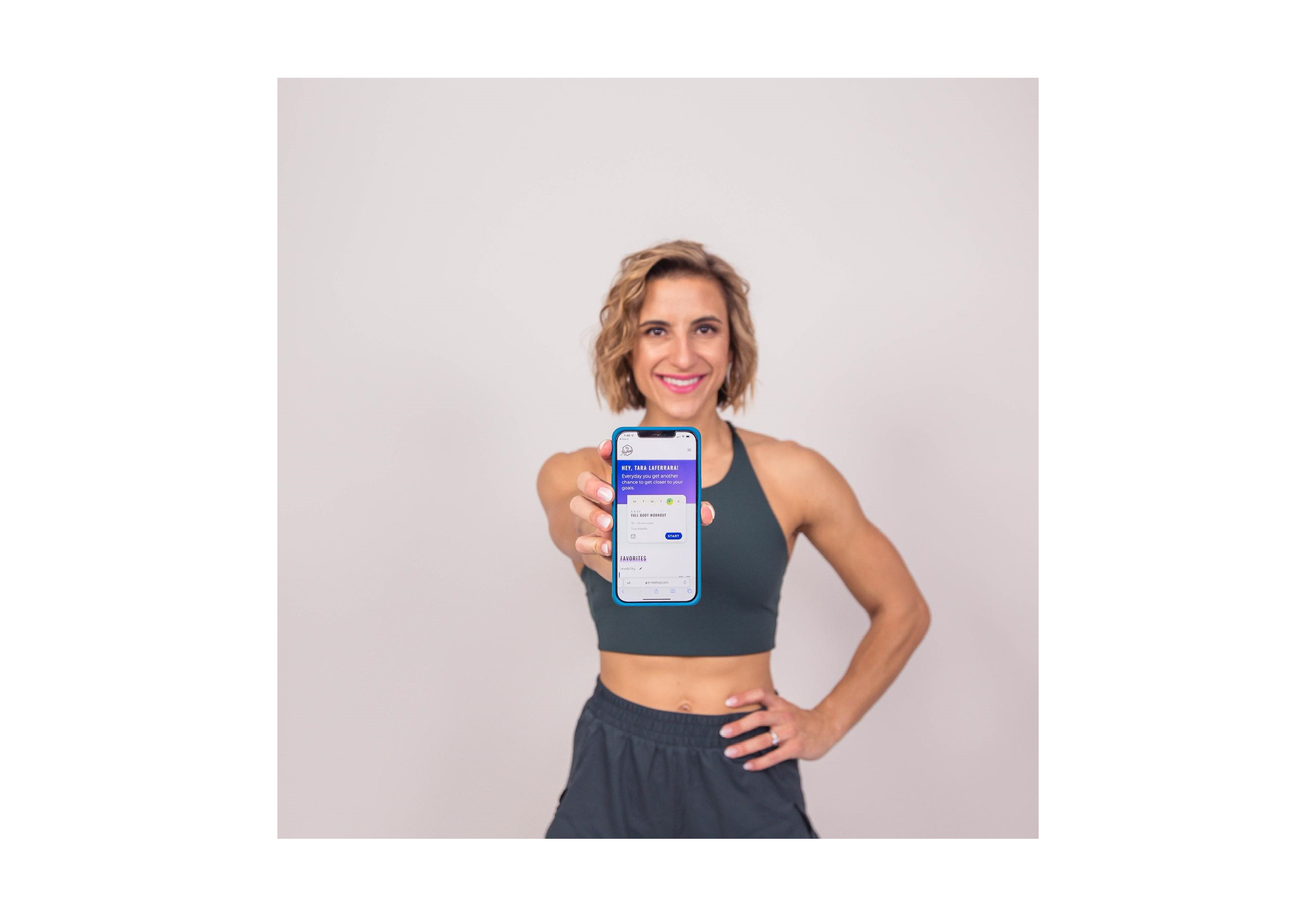Learning how to generate passive income can be the key to financial independence.
With costs for many essential items exploding in the last few years, many people feel the need for multiple sources of income to sustain their lifestyle and spending habits. And in an uncertain job market, more income streams means more peace of mind.
But without proper planning, many end up working continuously, and some can find themselves living paycheck-to-paycheck well into their retirement age.
One study found that only 22% of people close to retirement have enough money to maintain a comfortable living – down from 26% the previous year. In another study by the Natixis Global Retirement Index, 59% of US residents said they accept having to keep working longer. However, 36% believe they will never have enough money to retire.
But things don’t have to be that way.
No matter your age today, retirement can and should be a time to relax and enjoy a stress-free life where you live comfortably. It can be a time to pursue any endeavors that bring you joy without worrying about the bills. Whether that’s spending more quality time with loved ones, doing leisure activities, luxurious experiences, or even taking on extra income activities you enjoy.
Many retirees including former coaches, trainers, and educators have found passive income to be the true key to unlocking the retirement of their dreams.
Setting up multiple income streams early means you can enjoy your retirement with more freedom.
And while the ideal retirement differs for everyone, happiness in peoples’ golden years largely depends on their choices. This article will explore how to generate passive income in retirement and share various passive income ideas you can consider.
We want to note: The information shared here is not financial advice. We encourage you to speak to a professional financial advisor if you require expert assistance with retirement planning.
Ready to get some ideas for passive income streams? Let’s go!
What is passive income?
Passive income, also known as unearned income, refers to money that requires little effort or passive activity to generate.
Passive income is the opposite of active income, where you must actively participate to earn.
It’s important to note: Many passive income streams require initial setup or upfront investment before they become passive. Don’t let that deter you!
Building passive income is a great way to achieve steady cash flow without needing a full-time job in retirement. It can be your ticket to enjoying freedom and comfort in retirement.
Like active income, passive income sources are usually taxable and may be treated differently by the government. In general, though, passive income falls under capital gains taxes. The income tax rates also vary for long term and short term capital gains.
Passive income vs. residual income
Passive and residual income are often used interchangeably, but they have different meanings. Residual income is not a type of income, but rather a calculation of the discretionary money that is left after expenses.
Passive income is a type of income, but it is not always residual. Residual income can also be passive, but not always.
The primary types of passive income
There are three main types of passive income: business income (in which there is minimal or no material participation), self-charged interest, and rental properties.
Business (minimal or no material participation)
Passive income sources can be autonomous or require minimal effort. But whether your business income qualifies as passive depends on where you live.
In general, the following would qualify as passive income:
- A teacher builds an education business that earns ongoing revenue with minimal maintenance required.
- A coach invests $150,000 into a small business and receives a percentage of yearly earnings.
Business-based passive income streams are typically the most profitable.
Self-charged interest
This refers to the interest charged to an individual who borrows money from a business or company with which they have a connection during the tax year. For instance, if someone takes a loan from their corporation, the interest charged by the company is considered passive income.
Rental properties
Generating income from renting something you own is usually considered passive income, though certain exceptions may apply. For instance, rental income earned by real estate agents is considered active income in many states. Similarly, land lease income only qualifies as passive income in specific circumstances. For more information on this topic, see rental income earned by real estate agents.
Passive income ideas for retirement planning
So, how do you build passive income streams?
First, choose the types of passive income sources that will work for you.
Second, start building your passive income investment portfolio.
You may need a financial advisor to help you in this process.
Here are some of the best passive income sources to consider:
1. Build a coaching business
As an educator or coach, you know a lot that can help others achieve their goals, so consider building a coaching business.
Most coaches generate income from one-on-one services, but that’s hardly passive. The way to turn a coaching business into a passive income stream is by monetizing content through subscription offers.
There are two prime ways to do this today.
Create a YouTube channel
Many people generate residual income from their YouTube content. Consider creating a YouTube channel and monetizing your content to earn passive income.
You can earn income from your channel in various ways, including:
- Advertising revenue
- Channel memberships
- Super Chat and Super Stickers
- YouTube Premium revenue
- Merchandise shelf
- YouTube Partner Program
- Brand deals and sponsorships
For more detailed information on monetizing your YouTube channel, check out our in-depth guide.

- Advertising revenue: These are ads served while users watch your video, including advertisements on the YouTube Watch Page and Shorts Feed.
- YouTube Premium: You’ll earn a part of the user's subscription fee when they watch your videos. This is an easy way to make passive income since the viewer isn't affected in any way, and no action is necessary on their part.
- YouTube Channel Memberships: YouTube users can pay a monthly recurring fee to obtain memberships from the channels they love in exchange for special perks. For example, channel members may have exclusive access to new content before anyone else. It’s up to the creator what perks to offer their audience.
- Merchandise sales or shopping: Eligible creators can integrate an online store and promote products across YouTube. The platform supports Spring or Spreadshop online stores. However, creators using different platforms can easily create a specific store for YouTube and import products.
- Super Chats & Super Stickers: Fans can pay to highlight their chat messages during live streams.
- Super Thanks: Fans of your page can pay to get their message highlighted in the video comments section.
You'll need to meet YouTube’s creator requirements and apply for the YouTube Partnership Program (YPP) to start earning.
The standard eligibility requirements to apply for YPP are 1,000 subscribers and 4,000 total watch time in one year or 10 million public YouTube Short views in 90 days.

Some of the best-performing content on YouTube includes:
- How-to content: These videos show people how to do specific things or solve problems.
- Before and after results: Show people how your coaching business helped others with testimonials and case studies. You may need permission from past clients to share such details.
- Encouraging content: Help people break through mental blocks by encouraging them about something. Figure out the core problems your target audience faces and develop encouraging content.
- Thought-provoking monologues: These are stories or thoughts that challenge the status quo or cause people to think seriously about things. Consider what you can share that's thought-provoking and valuable to your audience.
YouTube is also a great way to build and grow a community, and a community is one of the best sources of passive income streams. A community of any size increases the number of potential customers and demand for your services.
Create and sell an online course
Chances are people are willing to pay for your knowledge and expertise. So consider creating an online course for a passive income stream. For example, you can create and host a video course on your website. This can provide steady cash flow while in retirement with minimal maintenance.
Plus, online education is booming. The global Online Education industry’s revenue will reach $238.39 billion by 2027 (projected), with a compound annual growth rate (CAGR) of 9.37% over 2023-2027.

This level of growth illustrates why, like YouTube, an online course is one of the best sources of passive income.
If you’d like to create an online course, the general process looks like this:
- Identify a target audience
- Choose an online course topic
- Create the course outline
- Create the online course
- Plan out how you will market the course
- Set up sales funnels
- Build or obtain a great website
The most challenging aspect of launching an online course is the technical side, specifically marketing, sales funnels, and website development. That’s why Subkit takes care of that part for you.
Subkit allows you to turn your expertise into an online course and receive predictable recurring revenue monthly. Your high-SEO profile page is designed to be an out-of-the-box solution to connect with your students. And if you want to give things a try, you can start for free.
A great example to follow is Dion of Conatus Surf Club. By sharing teasers, tips, and insights along with pictures of his successful students, Dion showcases his skills as an instructor, demonstrates the results he can help clients achieve, and inspires them to follow and join the fun.

Let's translate to an example that might work for you. Say you’re a retired educator with valuable knowledge and skills to share online – but what's your strategy to grow your audience with social posts to develop your passive income stream?
Start with teasers for your courses and events – short and catchy posts that show what you offer and invite your audience to learn more. Teasers create interest and excitement for your topics and activities.
You can also add tips or tricks on how to learn new skills or topics. This shows your expertise, generosity, and trustworthiness. It also helps your audience learn something new.
You can also use hashtags, questions, or emojis to catch attention and make interaction. For example, use #onlinelearning, #lifelonglearning, and #learnwithme hashtags, ask your audience about their learning goals or challenges, and use emojis like 📚👩🏫🙌 to add your unique personality.
You should also collaborate with other online educators or communities – what if you used the #bookclub hashtag to offer a bundle to book lovers? This creates new opportunities and connections, unlocking even more potential revenue streams.
The key to making compelling content is to be relevant, clear, and consistent. Spark curiosity and support learning.
Subkit empowers solopreneurs and small business owners to turn their products, services, and knowledge into passive income: Get started today! 🚀

2. Rental income (real estate investment properties and other rental properties)
Owning a home or other valuable rental property can be a great source of passive income through rental payments. And entry into the market is easier than one may think.
Consider the following rental income ideas:
Rent a spare room in your home
There are two ways to find a tenant for your spare room: you can either search for one yourself or list your room on websites like Airbnb. Renting out your spare room can provide a passive income stream, as well as other benefits, such as improving your social and support network. These benefits are particularly important for retirees.
But you don't need to wait until retirement to rent out your spare room. You can start now and save the extra money in a retirement account or bank account. Retirement accounts allow you to save money in a tax-advantaged way.
Turn your home into a vacation rental property
Consider renting your entire home as a long-term or short-term vacation rental. Often, those who do this have another, cheaper place to stay while their home is rented out. Alternatively, some people convert their basements into separate units, allowing them to continue living at home without affecting the guest experience.
You don't have to use your home as a vacation rental property all the time. For instance, you could rent it out while you're traveling or on a business trip.
All of the extra income can be added to your retirement account or used to supplement cash flow.
Either way, the income adds up and should help you live more comfortably.
Real estate investment trust (REIT)
A real estate investment trust (REIT) is an organization that finances income-generating real estate. REITs pool together the capital of various investors to acquire commercial real estate properties or investment portfolios and pay dividends to each individual.
This kind of investment makes it possible for people to earn a good income from real estate without the need to buy, manage, or finance properties themselves.
Properties in a REIT may include the following:
- Retail centers
- Self-storage
- Apartment buildings
- Data centers
- Timberland (land for harvesting and selling timber)
- Warehouses
- Healthcare facilities
- Hotels
- Infrastructure (in the form of cell towers, energy pipelines, fiber cables, etc.)
- Office buildings
Real estate investment trust companies usually specialize in a particular type of real estate investment. It’s also possible to invest in diversified and specialty real estate investment trusts that have various property types in their investment portfolios. For instance, a company's portfolio may include office and retail properties.
Many real estate investment trusts are publicly traded, which allows investors to buy and sell them like stocks.
There are three primary types of real estate investment trusts:
- Equity – This is the most common type of property investment, where revenue is generated through renting rather than selling the properties.
- Mortgage – These organizations lend money to real estate owners and operators, either directly by providing a mortgage loan or indirectly through acquiring mortgage-backed securities. Earnings are generated primarily by the net interest margin, which is the money left after accounting for interest on mortgage loans and the cost of funding each loan – so interest rate increases can affect this type of real estate investment trust.
- Hybrid – As the name suggests, this type of real estate investment trust combines equity and mortgage strategies. Investors can earn from rental income and net interest margin.
You can invest in a REIT by purchasing shares through a broker or by buying them yourself if they are publicly traded. If you want to invest in a non-traded REIT, you'll need to go through a broker who participates in non-traded offerings.
It’s important to note: Investing can cause people to lose a significant amount of money. Always seek trusted, professional guidance.
Be wary of fraudsters, as some real estate investment opportunities are a scam. The U.S. Securities and Exchange Commission recommends caution with any organization not registered with the SEC. They advise investors to use the SEC's EDGAR system to verify companies.
Researching the background of any broker or investment advisor can also be helpful.
Rent a parking space
If you own a parking space or lot not in use, you can rent it out for cash flow.
A large parking space can fit several cars, making it an ideal investment. However, even a single parking space can be turned into a passive income stream, provided that the regulations in your area allow it. Although this may not result in significant earnings, it is a way to earn additional income with minimal effort.
In areas like downtown locations where people work and vacant parking are in high demand, you can generate lots of revenue over time. But ensure you're not violating any restrictions in your region by renting out a parking space, and seek professional guidance to avoid any legal trouble.

Purchase investment properties
Investment properties are real estate purchased with the aim of generating an ROI (return on investment) through rental income or capital gains. You can acquire investment properties as an individual or with a group of investors, and hold them either for the short or long term.
Short-term investors often engage in flipping, which involves remodeling or renovating a property before selling it. Long-term investors typically hold onto investments to generate rental income.
Before purchasing an investment property, consider the following: whether a return on investment is possible, it makes financial sense, and you have the time to manage the property. This requires a lot of due diligence, such as inspecting the property for damage and calculating any potential loss and how it might impact your finances.
Many long term investors hire property managers to manage their properties, allowing them to continue acquiring assets.
Additionally, the term investment property can describe other assets besides real estate. A few quick examples...
Non-real estate rental properties
Rental income can come from non-real estate assets as well, such as cars, machinery, boats, and more. You can find people who want to rent these items occasionally through peer-to-peer renting websites.
You'll have to research to find appropriate sites for your needs – some of the best peer-to-peer renting sites for inspiration are Turo (for cars), Boatsetter (boats), RVshare (recreational vehicles), and ShareGrid (camera equipment).
When using peer-to-peer renting sites, make sure the site is legitimate and that whatever you rent is properly insured. Your standard insurance policy may not cover renting the property to someone else. You may need a separate policy or an add-on through your insurance agent, so definitely get an expert's opinion.
3. Collect dividend-paying stocks
Buying stocks is equivalent to purchasing partial ownership of a business. It is a great way to become a company owner without actively participating in the growth of a profitable organization.
As a shareholder or investor, you have the potential to earn a reasonable return on your investment based on the organization's profits and cash flows.
Paying out dividends, however, can impact the stock price of an organization. This is because the money paid to shareholders is no longer part of the corporation’s assets. As a result, the organization cannot reinvest the money to grow the business.
4. Invest in mutual funds
Mutual funds are investment funds that pool cash from various investors to invest in securities such as bonds, stocks, and short-term debts. This can be a great way to diversify your investment income instead of heavily relying on the success of a single investment.
Certain mutual funds invest in companies that offer dividends. As an investor, you can decide whether to reinvest your earnings by purchasing more mutual fund shares or to receive the additional funds directly in your bank account.
Receiving the dividends in your bank account may be good if you need to improve your cash flow. On the other hand, reinvesting may be better if you don't require the cash flow but want to increase your investment portfolio value over time.
Dividends are typically sent monthly or quarterly, depending on the mutual fund.
Additionally, some mutual funds contain municipal bonds. These funds invest in debt securities that are issued by municipalities, cities, states, and other government organizations to finance infrastructure construction, repairs, and improvements.
The noteworthy benefits of mutual funds that hold municipal bonds include:
- Tax advantages – Depending on the mutual fund, earnings may be exempt from federal or state, or local taxation.
- Giving back to your community – many fund local projects, such as roads, bridges, schools, community parks, and hospitals.
It is worth noting that mutual funds are not required to make interest payments, although some may do so at their discretion. Similar to investing in ETFs, there’s the risk of losing your investment.
5. Make interest income from loans
One way to generate a passive income stream is to lend your money, either in the short-term or long-term. This can be a great way to help people in need while also earning passive income from interest payments.
There are two primary ways to start lending money. The first is to go through a financial institution. The second is to use a peer-to-peer lending platform, also known as peer lending, P lending, or P2P.
If you prefer using a financial institution, contact a bank and set up a time to discuss investment options. The bank should be able to find suitable financial products or create opportunities for you to generate passive retirement income through secured loans.
To start with peer-to-peer lending, create an account on a peer lending platform such as Prosper. These platforms enable investors to browse loan requests and fund whichever ones they choose. The interest payments on loans then provide a passive income stream.
Experts predict that the global peer lending market will reach a value of $804.2 billion by 2030, with a 29.1% compound annual growth rate (CAGR). Consumer lending is currently the largest segment of the peer lending market, accounting for 80% of it.

Keep in mind that peer lending carries the same risks as any other loan, namely the potential for default. In other words, whether you get your money back depends on the borrower's ability to repay the funds with interest. If they are unable to do so, you may lose your investment.
Banks often secure loans with collateral to reduce risk, such as physical real estate property, for that exact reason. By using a real estate asset to back up the borrower's promise to repay the loan, the likelihood of default is lower.
One way to mitigate some risk of peer lending default is to diversify your investments. This way, even if some borrowers default, you can still generate a good ROI across other investment opportunities. Again, be sure to understand what you’re getting into with peer-to-peer lending before jumping in, and consult with an expert for detailed guidance.
6. Earn interest income from a high return savings account
Another way to earn passive retirement income is through a high-interest savings account. These accounts are typically federally governed and yield higher interest rates than the national average.
The biggest benefit of these special savings accounts is compound interest. This means that the interest you earn is added to the account balance each month or year, becoming the new balance used to calculate interest income.
For example, let's say you deposit $25,000 into a high-yield savings account that earns $750 in interest on a 3% APY (annual percentage yield). The following year, your interest rate would be calculated using $25,750, resulting in even more money earned.
Some people save enough money in these accounts and leave their funds there, only withdrawing the interest income annually. Others use them as additional retirement accounts.
The interest rate for savings accounts depends on the bank and any applicable regulations. Online-only banks often come with higher interest rate perks due to lower business overhead compared to brick-and-mortar banks.
7. Optimize retirement income
For many retirees, social security alone isn't enough to cover expenses. Fortunately, you can optimize your social security benefit or federal retirement income to receive more financial support.
To optimize your social security benefits, the first step is to determine when you should start taking them. You can then estimate the amount you'll receive by using the Social Security Administration's Retirement Estimator, available at: https://www.ssa.gov/prepare/plan-retirement
The tool will calculate the monthly income you may receive if you start at age 62 (early), 67 (standard), or 70 (deferred).
From there, you can determine the best way to raise your monthly social security benefit payout.
For instance, married couples can collect spousal payments to increase their social security income. Similarly, you can increase your retirement income by delaying your claim until age 70.
To qualify for social security benefits, most people must work and contribute for at least ten years (or 40 quarters).
Consider speaking with a professional financial advisor to maximize your social security benefit. The process is more complex than it may seem, and making the wrong decision could result in lost retirement income.
8. Build a mobile app
Developing a mobile app to solve specific problems is a good idea for generating passive income. Most coaches and educators can easily turn their expertise in one or multiple areas into a mobile app solution. For example, you could create a mobile app to help people learn math.
You can also turn novel ideas into usable apps.
You don't necessarily need programming knowledge to build an app today. You can use no-code app builders, which are affordable solutions for transforming ideas into usable applications. You'll still need to learn how to use the tool, though, so it may be best to hire a mobile app developer depending on your situation.
9. Launch an online store
There are multiple ways to start an online store and generate passive income.
One way to generate a passive income stream is by selling products on Amazon or Etsy. In particular, Etsy can be an excellent platform for those who can create unique products that people desire and give as gifts – on Etsy can offer handmade goods, craft supplies, jewelry, unique art, and vintage items.
Running an online store is often considered a passive income stream because you can use third-party logistics (3PL) and dropshipping for inventory, combined with automation.
These solutions make it possible for practically anyone to run an online business with minimal effort after the initial setup.
3PL
3PL refers to the outsourcing of ecommerce logistics processes, which includes inventory management, warehousing, and fulfillment. These service providers offer the necessary infrastructure and tools to automate retail order fulfillment.
Sellers place orders for inventory, which are then handled by the 3PL company. The 3PL company manages warehousing, product delivery, returns, and other related services. Examples of 3PL companies include ShipBob and ShipHero.
Dropshipping companies
This is a fulfillment model in which online store owners do not need to order inventory or keep products in stock. Instead, they partner with a third-party supplier (the dropshipping company) to sell products and have them delivered directly to consumers.
The third-party supplier ships the products that customers buy on your behalf. This means there are no overhead costs for managing physical inventory or fulfilling orders. Instead, the dropshipping service provider or supplier takes care of these tasks while you focus on product development, marketing, and customer service.
Dropshippers can also automate pricing and many other processes.
You can typically find dropshipping companies through online research focused on your field or by contacting specific manufacturers directly. Other methods for identifying the ideal dropshipping organization include:
- Use Niche Scraper: A product research tool that recommends suppliers in the market and helps sellers spot trending items.
- Go to a trade show: Attend trade shows to meet suppliers and view products in person.
- Research the competition: Consider buying products from your competitors to reverse lookup their dropshipping suppliers.

10. Affiliate marketing
Affiliate marketing involves earning money by promoting a vendor or service provider's product. Many website owners and social media influencers use affiliate marketing as a passive income stream.
In many cases, this simply involves adding a referral link in your content, which can result in monthly commissions from successful conversions. Partners typically pay between 5% and 30%, but some products can earn you even more.
To get started, you must sign up with an affiliate marketing partner – the biggest ones include Amazon, eBay, and ShareASale. Then decide what kinds of products you’d like to promote and start creating content.
Having a decent amount of website traffic or a large following on another platform, such as YouTube, is ideal for promoting affiliate products. An email list is also effective if you have a sizable audience.
In more lucrative niches like finance and software, even a small amount of traffic can be enough to earn a substantial monthly income from affiliate marketing.
Still, you’ll need time to create content and build traffic if you're just starting with affiliate marketing. The Subkit team provides 1:1 marketing coaching to help you leverage effective SEO tactics based on your goals: start with Subkit.
11. Write an eBook
Consumers love eBooks and buy them like hotcakes. These digital products work well as a passive income stream because there are no inventory or storage costs, assets are sold repeatedly with no limit to the number of copies.
It works a lot like online courses.
So consider writing one.
You can publish an eBook for sale on your website or Amazon Kindle and other applicable platforms.
To get started with writing an eBook, consider how you can help people achieve an outcome or solve specific problems.
Next, decide on a topic and create an outline.
Then, set the learning objectives and begin writing the eBook.
Here are some tips to help:
- Repurpose content: Educators and coaches often have content they can repurpose, such as blog posts. Look for material that can fit into your eBook with minimal adjustments to the copy.
- Be specific with your topic: Ensure your eBook is focused on a particular problem, as eBook readers are often searching for solutions to specific issues. The Ultimate Business Book is less specific than Master QuickBooks In 7 Days. The latter title is more focused, making it easier to reach and engage with your target audience.
- Understand the audience: Who will read your eBook and why? It's important to gain a thorough understanding of the target demographic and their motivations.
- Size up the competition: Purchase and read some eBooks that are performing well in your niche. Consider what the authors could have done to improve their books. This will help you produce a product that offers something different from what has already been published.
- Market your eBook: Focus on strategies that will make the most impact. If you need some guidance, don't hesitate to contact the Subkit team.
Subkit can help you turn physical and digital products into a subscription business for passive income. Ready to go? Get started with Subkit today.
Now you know how to generate passive income in retirement
Retirement planning is critical to achieve your financial goals and ensure financial security in retirement.
While the passive income stream ideas shared here are viable, it's important to remember that there are risks and uncertainties involved with any financial investment. You should do your research and seek advice from a retirement planning advisor for any major decisions.
What you can do right now: Start building your idea and validating interest. That’s where Subkit comes in. Get your SEO-optimized page set up in just a few minutes and start growing a waitlist of potential students. Ready to start building your passive income stream?
Subkit empowers solopreneurs and small business owners to turn their products, services, and knowledge into passive income: Get started today! 🚀




